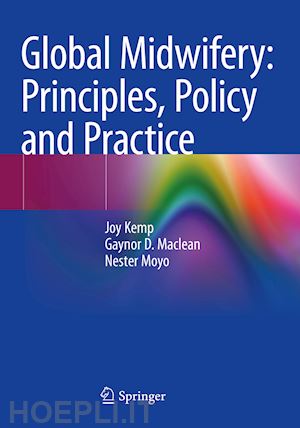Joy Kemp is a Global Professional Advisor at the Royal College of Midwives. Joy’s international career started in 1988 when she worked in a maternal and child health clinic in a Cambodian refugee camp in Thailand. This was followed by further humanitarian work in several other countries. In the 1990s she lived in a remote village in Cambodia, working as a health adviser to a longer term community development project. She is a fluent Khmer speaker. Joy then spent three years working with the NGO Tearfund, coordinating projects in Southeast Asia and working with local partners to build their organisational capacity. Returning to the UK in 2000, Joy worked in clinical midwifery practice, research, and education.
Since joining the Royal College of Midwives in 2013, Joy’s work has focused on building the capacity of midwifery associations in Asia and Africa through twinning. This work has been widely published and Joy frequently teaches and gives presentations onglobal midwifery at conferences and events. She is a member of the programme board for the Diploma in Sexual and Reproductive Health at the Liverpool School of Tropical Medicine and represents the RCM widely in the global health arena.
Gaynor Maclean is an international consultant in maternal and newborn health and Honorary Fellow at Swansea University. She has extensive experience in clinical practice, teaching, research, and UK Statutory Body service and has worked with numerous government and non-governmental organizations. Gaynor's work has focused on promoting safer childbirth, with assignments in countries where maternal mortality remains high, mainly in Africa and SE Asia; she worked as a consultant to the World Health Organization (Geneva) in order to author the 1st edition of the WHO Safe Motherhood Educational Modules. Her PhD studies at the University of Surrey focused on international consultancy work in the context of promoting safer childbirth.
Gaynor has produced online learning modules for the Royal College of Midwives (RCM) to prepare students for international electives and to inform and prepare midwives about global issues, and she has been a member of the Steering Group for the Lugina Africa Midwives Research Network (LAMRN) since its inception in 2012 through a partnership project with the University of Manchester. She is a member of the RCM Global Advisory Group.
Currently, Gaynor works on Safe Motherhood projects, and efforts associated with promoting skilled attendance during childbirth; she writes and edits training manuals, professional texts, and reports; speaks at national and international conferences and has received several awards in recognition of her contribution to promoting safer childbirth and midwifery worldwide.
Nester T. Moyo is a Global Midwifery Advisor and programme manager at the Hague, The Netherlands, and is retired from the International Confederation of Midwives (ICM) after 17 years of leading activities on strengthening midwifery globally. She has worked closely with Ministries of Health and midwifery programme managers to provide strategic and supportive leadership, technical and programmatic assistance for the design, development, and implementation of global, regional, and country level programmes in midwifery and SRMNCAH. She has expertise in developing and supporting the implementation of capacity building strategies for midwives; in the preparation of training manuals and other learning materials for continuing professional development; elaboration and implementation of tailor-made interventions and trainings.
She is an expert in organisational development, and led the designing and dissemination of the ICM’s Midwives’ Member Association Capacity Assessment Tool (MACAT), including training colleagues and countries on how to use it to create a professional association, how to assess the capacity of professional associations and how to evaluate progress of the association. She is a resource person for global initiatives to strengthen midwifery education and contributed to the development of the Global Essential Competencies for Basic midwifery practice, Global Standards for Midwifery Education, the midwifery education accreditation programme, and the global midwifery educator competencies.











